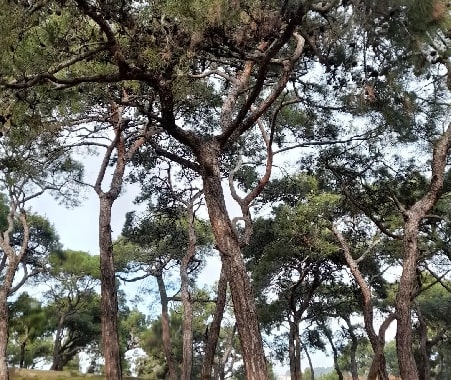Approximately 33.9% of the land area in the United States is covered by forests. This percentage includes both natural forests and planted forests. The United States has a diverse range of forest ecosystems, including temperate forests in the northeast and northwest, boreal forests in Alaska, and various types of forests in the western and southern regions. Forests play a significant role in the United States in terms of providing habitat for wildlife, supporting biodiversity, mitigating climate change, and offering recreational opportunities.
What percentage of USA is forest area?

Approximately 33.9% of the land area in the United States is covered by forests, according to the Food and Agriculture Organization (FAO). This percentage includes both natural forests and planted forests. Forests in the United States provide numerous ecological benefits, such as habitat for wildlife, carbon sequestration, water filtration, and recreational opportunities. The country has diverse forest ecosystems, ranging from temperate forests in the northeast and northwest to boreal forests in Alaska, and various types of forests in the western and southern regions.
Where are the largest forests in the Americas located?
The largest forests in the Americas are primarily found in the following regions:
- Amazon Rainforest: Located primarily in Brazil, the Amazon Rainforest is the largest tropical rainforest in the world. It spans across several countries, including Peru, Colombia, Venezuela, Ecuador, Bolivia, Guyana, Suriname, and French Guiana.
- Canadian Boreal Forest: Situated in Canada, the Canadian Boreal Forest is one of the largest intact forests on the planet. It extends across the northern parts of several provinces and territories, including British Columbia, Alberta, Saskatchewan, Manitoba, Ontario, Quebec, Newfoundland and Labrador, Yukon, Northwest Territories, and Nunavut.
- Pacific Northwest Forests: Found in the northwest region of the United States, primarily in Washington and Oregon, the Pacific Northwest forests are characterized by temperate rainforests with a mix of coniferous and deciduous trees.
- Patagonian Forests: Located in the southern part of South America, primarily in Argentina and Chile, the Patagonian forests encompass a diverse range of ecosystems, including temperate rainforests, Andean forests, and subpolar forests.
- Tongass National Forest: Situated in Alaska, United States, the Tongass National Forest is the largest national forest in the United States. It is known for its vast wilderness areas, fjords, glaciers, and old-growth forests.
These are just a few examples of the largest forests in the Americas, and there are many other significant forested areas throughout North, Central, and South America.
Which trees are most common in the American forests?
The tree species that are most common in American forests vary depending on the specific region and ecosystem. However, there are several tree species that are widespread and dominant in many American forests. Here are some of the most common tree species found in American forests: How many species of trees are there in forests in the USA? >>
- Oak (Quercus): Oaks are a diverse group of tree species and are widely distributed across North America. They are known for their strength and durability, and different oak species can be found in various forest types.
- Pine (Pinus): Pine trees are prevalent in many American forests, especially in regions with drier and more acidic soils. Examples of common pine species include Eastern White Pine, Loblolly Pine, Ponderosa Pine, and Slash Pine.
- Maple (Acer): Maples are deciduous trees and are well-known for their vibrant fall foliage. Sugar Maple and Red Maple are common species found in many American forests.
- Spruce (Picea): Spruce trees are common in northern forests and mountainous regions. Species such as Sitka Spruce, White Spruce, and Colorado Spruce are found in different parts of North America.
- Fir (Abies): Fir trees are often associated with coniferous forests. Douglas Fir, Balsam Fir, and Fraser Fir are some examples of fir species found in American forests.
- Hemlock (Tsuga): Hemlock trees are commonly found in eastern and northeastern forests. Eastern Hemlock and Western Hemlock are two prominent species.
- Birch (Betula): Birch trees are known for their distinctive bark and are found in a variety of forest types. Yellow Birch, Paper Birch, and River Birch are examples of birch species found in American forests.
- Poplar (Populus): Poplar trees, also known as cottonwoods, are fast-growing deciduous trees found in various habitats. Examples include Eastern Cottonwood, Black Cottonwood, and Quaking Aspen.
These are just a few examples of the many tree species that contribute to the rich biodiversity of American forests. The specific tree species composition can vary depending on factors such as climate, soil conditions, and geographical region. How much of the United States is forested? >>
